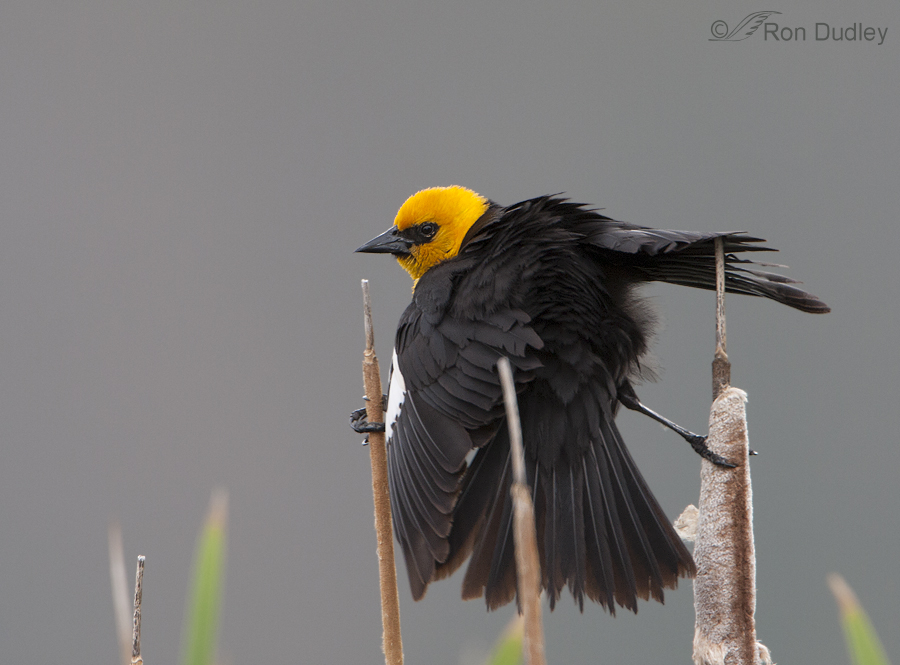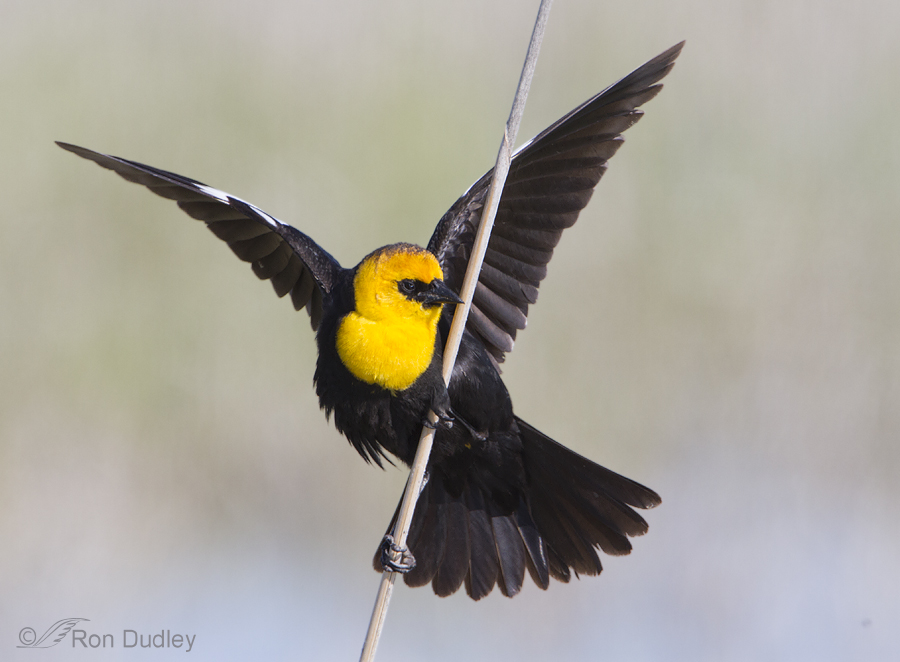Tag: yellow headed blackbird
Yellow-headed Blackbird Displaying
Blackbird On Stilts (subtitled JPEG vs RAW)
This is one of the oldest bird images in my files, taken on 6/17/07 and very soon after I became serious about bird photography. At the time I was still shooting JPEGs (rather than RAW). In my ignorance, making the decision to start shooting RAW was stressful for me. I was already overwhelmed by everything I had yet to master, from camera and lens operation to computer and processing skills and I was reluctant to add yet another layer to the mountain of “stuff” I had to learn. After about 6 months I finally took the plunge and changed the setting on my old Canon XTi from JPEG to RAW and I’ve never looked back. The only thing I’ve ever regretted was taking so long to make the change. To this day I dread having to process one of those older images that was taken as a JPEG (like the photo below). The JPEG vs RAW debate has been around for a while and I don’t mean to settle it here. All I know is that I much prefer processing RAW files for a variety of reasons. 1/1600, f/8, ISO 400, 500 f/4, 1.4 tc, natural light I always get a kick out of seeing birds in spread-eagled poses like this Yellow-headed Blackbird is demonstrating – it makes me think that if they don’t let go they’re going to split down the middle clear to the wishbone (furcula). Usually when I see this pose the two “perches” the bird is grasping are green reeds with many other reeds of similar colors nearby in the frame. But…
A Pleasant Surprise Amongst The Flowers
Parts of Antelope Island are simply covered with tiny purple flowers right now and I often look for opportunities to photograph birds in such a setting.
Displaying Yellow-headed Blackbird
Welcome to the month of March everyone – for me a psychological barrier between the depths of winter and the promise of spring. It’s supposed to be almost 50 degrees today and that has me thinking of spring birds, warmer temperatures, liquid water and some actual greens in the landscape. By the Ides of March (only two weeks from now) male Yellow-headed Blackbirds will begin arriving in Utah and the females a week or two later. Almost immediately the males will begin their raucous calling as they compete for territories and later for females. This male was defending breeding territory in May. Males display two primary types of song spreads – the Symmetrical Song Spread and the Asymmetrical Song Spread. Each song spread is accompanied by a distinct song type. Here’s a link to one of them. In this sequence of images the male is displaying the Symmetrical Sound Spread where the bird spreads its wings to expose the white patches and the tail is lowered and spread. During this display he localizes with the song called the Accenting Song. Once a display begins it almost seems like the bird loses voluntary control of its actions and the display must be completed before it regains control (my unscientific observation). During part of this display the head is directed upward at 30-45 degrees. This behavior is often difficult for the bird to complete without losing its balance on the typically spindly perches they prefer. The whole thing is quite entertaining to watch. …
Yellow-headed Blackbirds Displaying
Recently we spent a few days touring some of our local birding hotspots with Jim and Nancy DeWitt, friends from Alaska who were visiting our area. One of Jim’s goals was to see and photograph Yellow-headed Blackbirds, a species not found in Alaska. We felt sure we could find some for him but sadly we failed, even though we had seen them recently. Apparently they have skedaddled south for warmer climes. But the experience made me realize that I’ve neglected the species in my posts so I decided to rectify the situation. Males are real acrobats in their springtime territorial displays and they have two types of “song spreads” when they’re singing – each accompanied by a distinct song type. Both of these photos are of a male displaying one of those two spreads – the Symmetrical Song Spread. I prefer to photograph these birds doing this spread because during the Asymmetrical Song Spread they arch their necks sharply to the left (yes, always to the left and never the right) which exposes the neck skin and often makes for a decidedly unattractive photo. 1/1600, f/7.1, ISO 500, 500 f/4, 1.4 tc, natural light During the Symmetrical Song Spread, the bird spreads its wings to reveal the white patches and the tail is splayed out and lowered. If you can get the right light and exposure on the bird, this posture will often give you an interesting and rather dramatic image. The Symmetrical Song Spread is most often displayed when competing males fly over their territory. 1/100, f/8, ISO 500, 500 f/4, 1.4 tc,…



